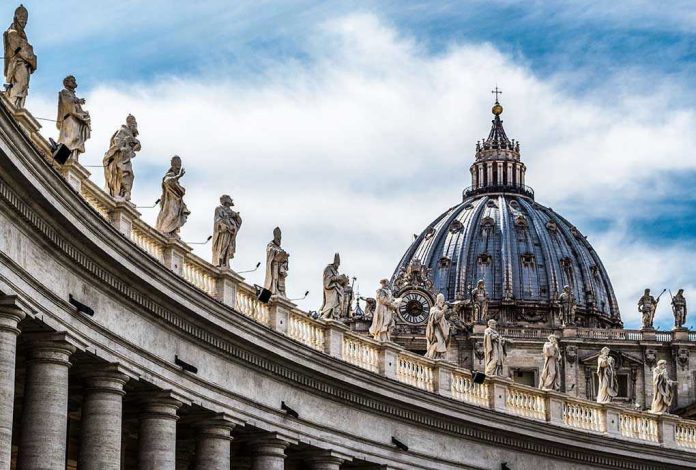
In a world where technology races ahead unchecked, the Pope warns that nothing man creates should undermine human dignity.
At a Glance
- Pope Francis urges protection of human dignity amidst AI and social media advances.
- Vatican hosts first mass for Catholic influencers, highlighting ethical responsibilities.
- “Antiqua et Nova,” a doctrinal note, emphasizes human-centered technology.
- Pope calls for AI to complement, not replace, human intelligence.
Pope Francis’s Call to Action
Pope Francis, speaking to young Catholic influencers at the Vatican’s first mass dedicated to them, delivered a powerful message about the importance of preserving human dignity in the face of technological advancement. In his address, he stressed that human creativity and technological progress must not come at the expense of undermining the dignity of others. This message comes at a critical time when artificial intelligence and social media hold substantial sway over our daily lives.
BREAKING – Pope warns against undermining human ‘dignity’ in AI, social media erahttps://t.co/IspCuE8q5A
— Insider Paper (@TheInsiderPaper) July 29, 2025
The Vatican’s engagement with technology is not new. Historically, the Church has addressed technological ethics, and now with AI and social media, it continues to assert its moral stance. This proactive approach aims to ensure that technology serves humanity rather than diminishes it. Pope Francis’s address is part of a series of initiatives by the Vatican to tackle the ethical challenges posed by modern technology, emphasizing the need for responsible innovation.
The Vatican’s Stance on AI Ethics
The release of “Antiqua et Nova” earlier this year marks a significant step in the Vatican’s ongoing dialogue on AI and digital ethics. This doctrinal note outlines the Church’s position on ensuring that technological developments are aligned with human values. It underscores the importance of AI complementing human intelligence, rather than replacing it, and calls for robust ethical frameworks to guide AI’s integration into society.
In recent months, Pope Francis has reiterated these concerns, warning of AI’s existential risks and the potential for misinformation. He has called for a global commitment to ethical innovation, urging tech developers and companies to prioritize human dignity over mere efficiency or profit. This call to action resonates deeply with those who are wary of unchecked technological growth and its implications for society.
Engaging Digital Influencers
The Vatican’s decision to hold a mass specifically for Catholic influencers highlights an innovative approach to spreading its message. By engaging with digital creators, the Church seeks to influence the digital space directly, encouraging influencers to embody and promote ethical digital practices. This move acknowledges the significant role that influencers play in shaping public opinion and discourse in today’s digital age.
These influencers, motivated by their faith and social engagement, are seen as intermediaries who can translate the Vatican’s doctrine into actionable practices online. This initiative demonstrates the Vatican’s understanding of modern communication dynamics and its willingness to adapt its outreach strategies accordingly.
Implications and Future Outlook
Pope Francis’s continued advocacy for ethical technology use is likely to have both short-term and long-term impacts. In the short term, it raises awareness among Catholic digital creators about their ethical responsibilities and encourages public discourse on AI ethics. In the long term, the Vatican’s stance may influence broader AI governance frameworks, advocating for human-centered technology on a global scale.
The tech industry, already under scrutiny for its ethical practices, may face increased pressure to align with these moral imperatives. As debates on AI regulation continue, the Vatican’s voice adds to the call for responsible innovation that prioritizes human dignity. This could lead to greater collaboration between religious, academic, and tech communities in the development of ethical guidelines and educational curricula.







